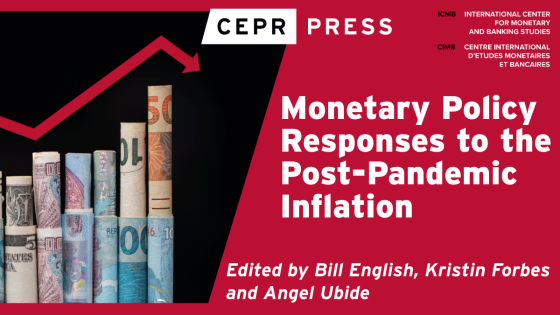The importance of forward guidance has been emphasised in real-world policymaking after many central banks in advanced economies reduced short-term nominal interest rates to the lowest possible level in response to the Global Crisis. Forward guidance may be used to communicate a central bank’s superior information about the future economic condition and its intended future action plan. Campbell et al. (2012) distinguish between Delphic forward guidance, which involves public statements about “a forecast of macroeconomic performance and likely or intended monetary policy actions based on the policymaker’s potentially superior information about future macroeconomic fundamentals and its own policy goals,” and Odyssean forward guidance that involves the policymaker’s commitment. When can credible forward guidance be a useful policy tool to manage the expectations of the private sector?
The New Keynesian monetary policy literature (e.g. Woodford 2003) has provided a theoretical rationale for Odyssean forward guidance. In New Keynesian models, economic agents are forward-looking, and their decisions depend on their expectations about future economic outcomes. Therefore, a policymaker’s credible commitment to its future action plan can influence the private sector’s actions today through their expectations about the future. For example, a central bank can reduce the response of current inflation to an inflationary shock (a positive cost-push shock) by promising policy tightening in the future because a reduction in expected future inflation discourages sellers from raising their prices today. Such commitment is found to be very effective to stabilize inflation and the output gap in New Keynesian models.1
A natural question is how useful is Delphic forward guidance? Answering this question is important for two reasons. First, central banks have been thought to possess private information about future economic conditions. For example, Romer and Romer (2000) provide empirical evidence of asymmetric information between the central bank and private agents: “the Federal Reserve has considerable information about inflation beyond what is known to commercial forecasters.” Campbell et al. (2012) find empirical evidence that suggests that the forward guidance employed by the FOMC has “a substantial Delphic component”. Second, although the importance of Odyssean forward guidance has been well established in the New Keynesian literature, it is not yet established whether Delphic forward guidance is useful in New Keynesian models.
Our recent work attempts to answer this question (Fujiwara and Waki 2016). We add to an otherwise standard New Keynesian model news about future economic conditions which is observed only by the central bank and investigate whether the central bank should reveal such ‘private news’, i.e. that which it privately possesses, through communication or observable policy actions. We consider news about cost-push shocks, shocks to the central bank’s loss function, and shocks to the natural rate of interest. To focus on private news, we assume that contemporaneous shocks are perfectly observed by private agents.2
Our main theoretical result is that the central bank finds it optimal to commit to not revealing its superior information about news shocks at all, either directly through communication or indirectly through observable policy actions. Expected social welfare loss increases when the private sector becomes better informed about future economic conditions, and an optimal commitment policy never utilises the central bank’s superior information. In other words, there exists an expected virtue of ignorance.
The underlying mechanism is simple and operates through the forward-looking, price-setting behaviour of sellers, i.e. the New Keynesian Phillips curve. Imagine that the sellers also receive some information that is useful in predicting future cost-push shocks. Such information influences their inflation expectations and, therefore, the prices they set today. Their price-setting decisions become more susceptible to future cost-push shocks, and, everything else being equal, inflation becomes more volatile. Conveying news about shocks to the central bank’s loss function and shocks to the natural rate of interest has the same effect. In contrast to Odyssean forward guidance that helps stabilise inflation and the output gap, Delphic forward guidance can destabilise them in New Keynesian models.
It is important to note that being secretive about news is optimal ex ante but may not be so ex post, i.e. after the central bank has observed particular realisations of news. Therefore, there is a time-inconsistency problem. Imagine that the economy is hit by a positive cost-push shock, which incentivises sellers to set high prices with everything else being equal. Once the central bank observes a signal that a negative cost-push will likely hit in the future, it is tempted to convey that information to the private sector because it reduces the sellers’ inflation expectations and discourages them from setting high prices. Time-inconsistency of commitment policy is well known in New Keynesian models, but our result is new in that it shows the possibility of time-inconsistency problem in the communication policy too.
This study therefore identifies an interesting property of a wide range of New Keynesian models.3 Precisely because price setters are forward-looking and there is a sticky-price friction, they set prices in response to news shocks. From the ex ante point of view, inefficiency associated with price fluctuations is reduced by concealing news shocks from private agents. This implication provides a cautionary tale for central banks’ communication strategies. Our result suggests that it may be even socially undesirable if the central bank, through communication, helps the private sector form more accurate forecasts for future economic conditions. Delphic forward guidance based on private news can be harmful. The central bank should instead aim to conduct Odyssean forward guidance by communicating its state-contingent policy, i.e. what it will do in response to these shocks after they materialise.
Editor's Note: The main research on which this column is based (Fujiwara and Waki 2016) appeared as a Discussion Paper of the Research Institute of Economy, Trade and Industry (RIETI) of Japan.
References
Angeletos, G.-M., and A. Pavan (2007): “Efficient Use of Information and Social Value of Information,” Econometrica, 75(4), pp. 1103–1142.
Barro, R.J., and D. B. Gordon (1983): “A Positive Theory of Monetary Policy in a Natural Rate Model,” Journal of Political Economy, 91(4), pp. 589-610.
Campbell, J. R., C. L. Evans, J. D. , and A. Justiniano (2012): “Macroeconomic Effects of Federal Reserve Forward Guidance,” Brookings Papers on Economic Activity, 44(1 (Spring), 1–80.
Fujiwara, I., and Y. Waki (2016): "Private News and Monetary Policy: Forward guidance or the expected virtue of ignorance," Discussion Paper 16-E-027, Research Institute of Economy, Trade and Industry (RIETI).
Kudland, F. E., and E. C. Prescott (1977): “Rules Rather Than Discretion: The Inconsistency of Optimal Plans,” Journal of Political Economy, 85(3), pp. 473-491.
Morris, S., and H. S. Shin (2002): “Social Value of Public Information,” American Economic Review, 92(5), pp. 1521–1534.
Romer, D. H., and C. D. Romer (2000): “Federal Reserve Information and the Behavior of Interest Rates,” American Economic Review, 90(3), pp. 429–457.
Woodford, M. (2003): Interest and Prices: Foundations of a Theory of Monetary Policy. Princeton University Press, Princeton.
Endnotes
[1] The importance of commitment of course is not limited to New Keynesian models and dates back to Barro and Gordon (1983) and Kydland and Prescott (1977).
[2] We also assume symmetric information among private agents in order to focus on information asymmetry between the central bank and the private sector. There is vast literature that considers the role of communication policy in coordinating heterogeneously informed private agents. See, for example, Morris and Shin (2002) and Angeletos and Pavan (2007).
[3] Robustness checks are also conducted numerically. We examine two linear-quadratic models with endogenous state variables—the model with price indexation and the model with endogenous capital—and a non-linear, canonical New Keynesian model. In these models, secrecy still constitutes optimal commitment policy.


